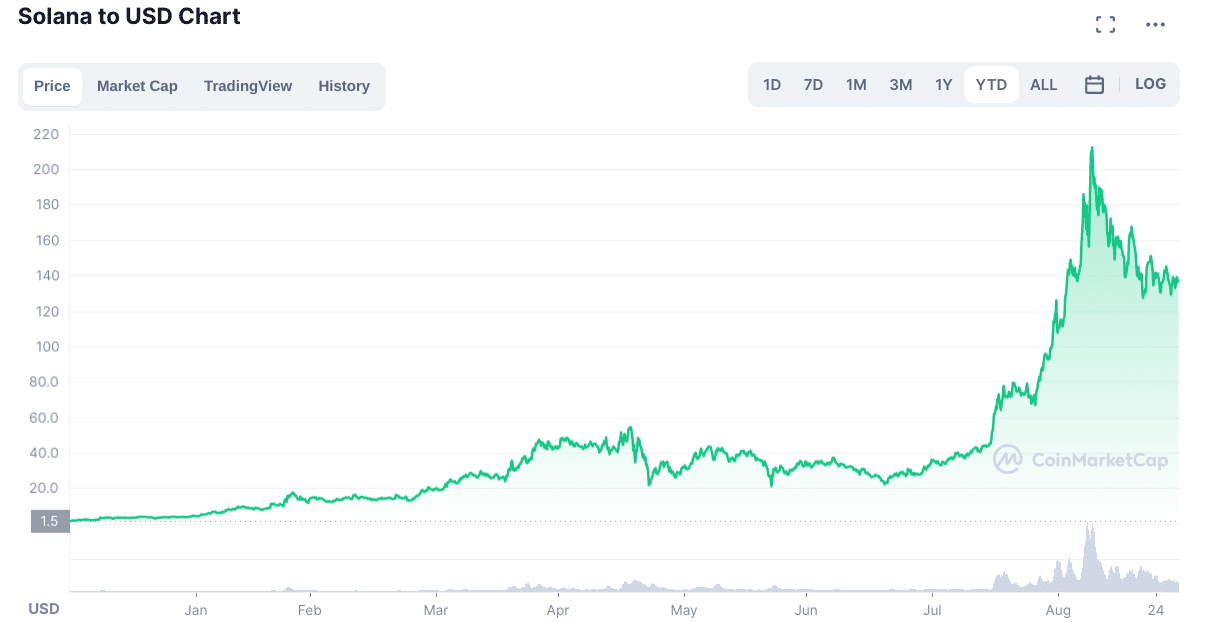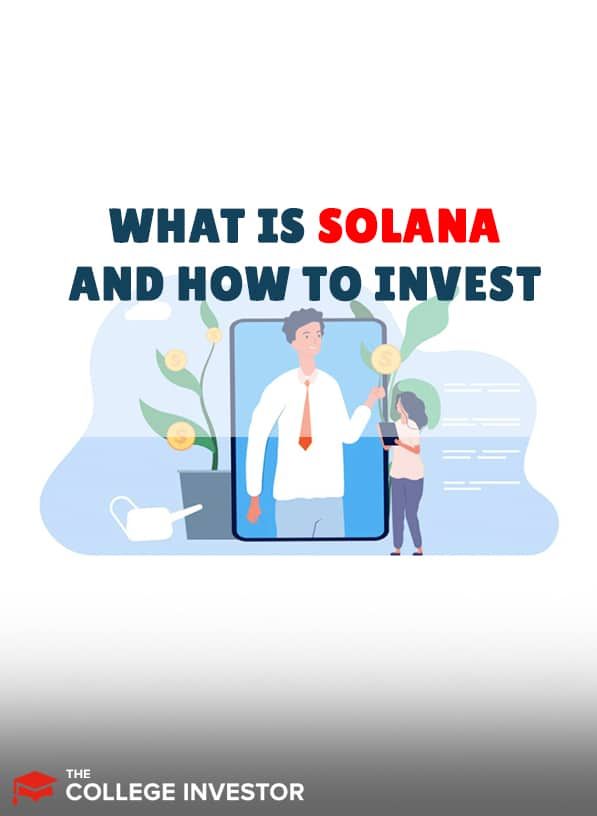
Over the past several months, some of the major cryptocurrencies have cooled off a bit. But SOL, the native currency of the Solana blockchain, is a major exception. This relatively new coin experienced a massive run-up between the start of 2021 and the start of September.
But this hot commodity isn’t without its troubles. On the 14th of September, the entire Solana Blockchain shut down for 17 hours after a Denial of Service (DoS) attack.
That could prove that SOL was overhyped. Or it could indicate that the SOL coin is experiencing growing pains as it scales. If you’re interested in investing in SOL and the Solana Blockchain technology, here’s what you need to know.
What Is The Solana Blockchain?
The Solana Blockchain is a technology that was created by the Solana Foundation. This organization uses open-source code to create and improve the blockchain.
Like all blockchain technologies, the Solana Blockchain uses distributed ledger technology. That means that transactions on the blockchain are validated by “validators” in a way that keeps information distributed among different nodes instead of centralized.
Unlike the oldest blockchain technologies, Solana uses the more updated approach called “staking.” In staking, validators offer proof of stake (basically, they prove they have SOL tokens) to keep the blockchain in operation.
This allows the blockchain to function faster and with fewer energy costs than traditional mining technologies. The result, when it works, is an extremely fast blockchain with transaction costs under $0.01 on average.
However, the staking method has some downsides. In a September 2021 DoS attack (basically, a bot fired tons of traffic toward the network), caused the network's validators to crash which subsequently knocked the blockchain offline for 17 hours.
How Is The Solana Blockchain Different From The SOL Token?
The Solana Blockchain is a fast, cheap, open-source technology that allows developers to build their blockchain technologies. Many of the apps that have been built so far are related to DeFi (Decentralized Finance), but others are NFTs, WB3s, and more.
So far, Ethereum is still the leading blockchain in regard to the number of digital apps and smart contracts that have already been built. But Solana's speed and low transaction cost is attracting many developers. Solana says that its blockchain already has more than 400 blockchain projects and that it's the "fastest-growing ecosytem in crypto."
The Solana Token, SOL, is the “value” or the token that keeps the Solana Blockchain running. Since validators must offer up SOL as a proof-of-stake, the SOL token is a critical component to keeping the blockchain going.
SOL Has Grown At A Rapid Pace
When Solana was first launched in April of 2020, it traded at a rate of $0.78 per SOL. The token experienced steady growth through the remainder of 2020 and then started an exponential growth curve in 2021.

On September 7th, SOL traded for over $190 per SOL. The token has subsequently experienced wild mostly downward volatility and as of now is trading for $140.
While SOL token’s wild volatility is nothing new in the world of cryptocurrency, the token itself has some interesting features. SOL’s crucial role in validating the Solana Blockchain gives owners a chance to invest in a specific blockchain instead of generically owning cryptocurrency.
How To Invest In Solana (SOL)
The easiest way to invest in Solana is to join a cryptocurrency exchange that supports the token and buy your desired amount. As with all cryptocurrencies, you can buy fractions of SOL if you don't want to put up the necessary funds to purchase one full coin.
Here's a quick list of some of the top crypto exchanges that support SOL in the U.S. right now:
- Binance.US: Read our full review here
- Coinbase: Read our full review here
- Crypto.com: Read our full review here
- Kraken: Read our full review here
- Uphold: Read our full review here
Investors can also earn SOL by becoming validators. The directions for becoming a validator are straightforward if you’re familiar with both open-source and cryptocurrency jargon. You need to run a validator software program on a local computer to receive a base stake. You earn more from more validation.
Whether you invest in Solana by purchasing tokens on an exchange or becoming a validator, you'll need to decide where you'll store your coins. Storing your SOL on an exchange is often the simplest option, but it's also the riskiest as you won't actually have possession of your private keys.
For better security, you may want to purchase a hardware wallet. It's important to note that you can use a Ledger or other hardware wallet for SOL, but you'll need to access it through a Solana Wallet (e.g. Ledger Live doesn't support SOL). A popular option is Solflare.
Are You Too Late To Invest In Solana?
Given the run-up in SOL prices (as compared to USD), it’s worth considering whether you’re too late to invest in this hot coin. Some coins trade at far higher prices and have experienced wild growth for nearly a decade before cooling off (at least for the time). Still, others saw run-ups in price before crashing.
In the world of crypto, anything is possible. The unique relationship between SOL and the Solana blockchain makes it a cryptocurrency with a unique investment angle. But there’s no guarantee that the token will continue to increase in price. After all, the code operating the blockchain is open source and another company may copy it to produce something better.
Final Thoughts
As with all cryptocurrencies, Solana is an alternative investment. Thus it should only have a limited presence in a well-diversified portfolio.
Ultimately, SOL may take off and make you a crypto millionaire. But it could also crash. Hedging your bets on Solana with traditional investments (like stocks, mutual funds, and ETFs) is the safest way to protect your finances.

Robert Farrington is America’s Millennial Money Expert® and America’s Student Loan Debt Expert™, and the founder of The College Investor, a personal finance site dedicated to helping millennials escape student loan debt to start investing and building wealth for the future. You can learn more about him on the About Page or on his personal site RobertFarrington.com.
He regularly writes about investing, student loan debt, and general personal finance topics geared toward anyone wanting to earn more, get out of debt, and start building wealth for the future.
He has been quoted in major publications, including the New York Times, Wall Street Journal, Washington Post, ABC, NBC, Today, and more. He is also a regular contributor to Forbes.
Editor: Clint Proctor Reviewed by: Claire Tak
